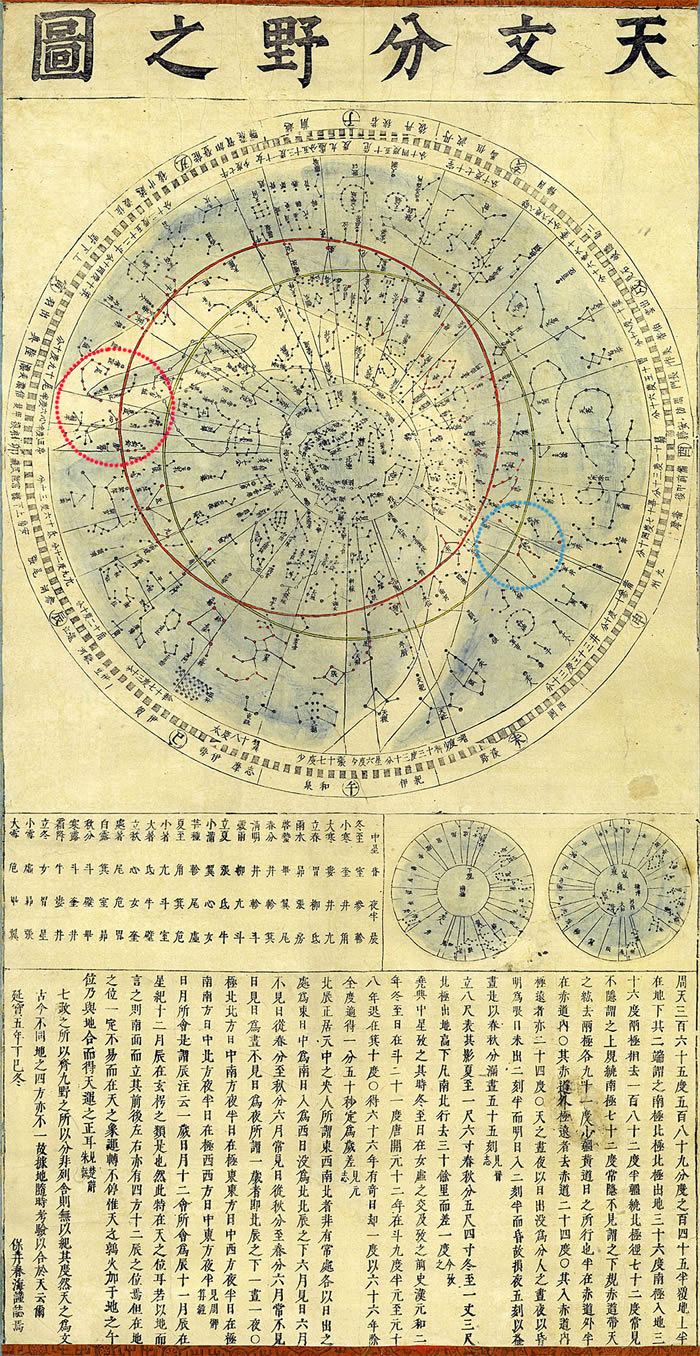Tenmon Bun’ya No Zu: Chart of the Constellations and the Regions they Govern
Historical illustration・

| First Publication | 1677(5th year of the Enpo Era) |
|---|---|
| Author/illustrator | Harumi Shibukawa (Other names: Harumi Yasui, Santesu Yasui) |
| Credit | Collection of the National Astronomical Observatory of Japan |
This star chart shows the stars and their associated names. In Chinese astrology, a type of fortune telling used to predict the fates of kings and nations, each area of the sky corresponded to a region on Earth. For example if there were shooting stars in the vicinity of a star, it was thought to mirror events in the corresponding region on Earth. Originally regions in China were listed, but Harumi Shibukawa created the Tenmon Bun’ya No Zu shown here, the first star chart adapted for use in Japan. If you look at the ring surrounding the star chart, you can see the characters for regions in Japan like Ise and Kyushu. The sky is shown in blue, the Milky Way is shown without color, and the Twenty-Eight Mansions (constellations of the Oriental Lunar Zodiac) are shown in red.
Harumi Shibukawa who made the first Japanese star catalog, was also the first person to make an independent Japanese Calendar, the Jokyo Calander.
In Japan, the Senmyo Calendar was used for over 800 years, but in 1673 AD (1st year of the Enpo Era), Harumi Shibukawa proposed calendar reforms to the Emperor. Between then and when the improved Jokyo calendar was implemented in 1684 (1st year of the Jokyo Era), he made the Tenmon Bun’ya No Zu in 1677 (5th year of the Enpo Era). Additionally, after the improved calendar, Harumi Shibukawa became the first Tenmonkata (Official Astronomer) appointed by the Bakufu, the Shogun led military government. It could be said that he is the father of the National Astronomical Observatory of Japan.
The Tenmon Bun’ya No Zu changed the geographical regions to places in Japan, but used the original Chinese constellations. The Tenmon Keito (Map of the arrangement of the stars and constellations) published in 1698 (11th year of the Genroku Era) added new constellations created by Harumi. These were popularized in the star charts of the Tenmon Seisho (Astronomical Manuscript) published under the name of his son, Hisatada Yasui, in 1699 (12th year of the Genroku Era).
(Translator's Note 1: In addition to the standard Gregorian Calendar, Japan continues to use a reign era calendar. The different eras are defined by changes in the Japanese government, and accompanied by changes in Japanese society. In this example the Jokyo Era marked the start of a new calendar for Japan.)
(Translator’s Note 2: During this era, an imperial government and a Shogun led military government coexisted in Japan.)